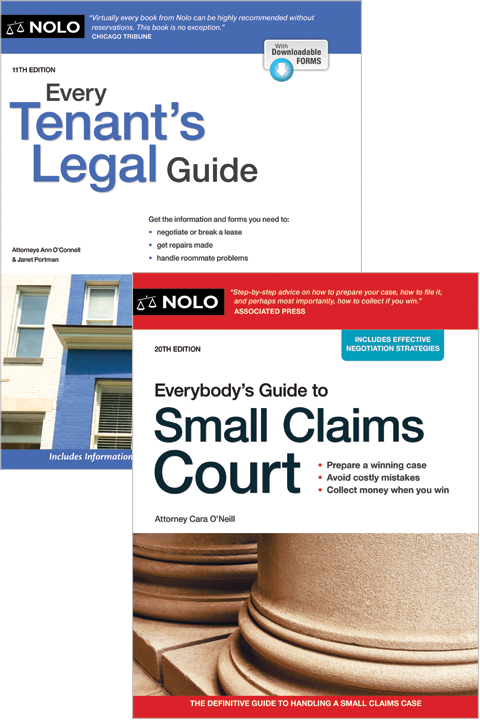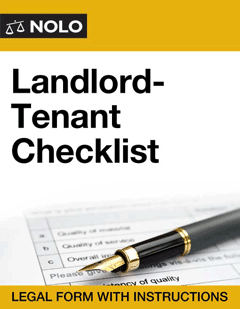Tips for landlords and tenants who are about to begin a new tenancy.
- Do landlords have to allow a grace period for late rent before they charge late fees? Are late fees legal?
- When are landlords allowed to raise the rent? How do rent control laws work?
- What's the difference between a rental agreement and a lease?
- Are there lease or rental agreement terms that a renter should look out for?
- How much security deposit can a landlord charge? What can it be used for?
Do landlords have to allow a grace period for late rent before they charge late fees? Are late fees legal?
Unless the lease or rental agreement specifies otherwise, in most states there is no legally recognized grace period—in other words, if a tenant hasn't paid the rent on time, the landlord can usually deliver a "pay or quit" notice the day after it is due. However, some leases and rental agreements do provide for a grace period for late rent.
Similarly, there is no legally recognized day that rent is due. Often rent is due on the first day of the month, but it is legal for a landlord to require rent to be paid on a different day of the month or at intervals other than monthly.
Some landlords charge fees for late payment of rent or for bounced checks; these fees are usually legal if they are reasonable. The laws on late fees can be found in your state's landlord-tenant statutes.
When are landlords allowed to raise the rent? How do rent control laws work?
For month-to-month rentals, the landlord can raise the rent (subject to any rent control laws) with proper written notice, typically 30 days.
With a fixed-term lease, the landlord may not raise the rent during the lease, unless the increase is specifically called for in the lease, or unless the renter agrees. At the end of the lease, the landlord may raise the rent, subject to any rent control laws.
Few communities have rent control laws. In fact, communities in only six states—California (statewide), the District of Columbia, Maryland, New Jersey, and New York (statewide), and Oregon (statewide)—have rent control laws that limit the amount of rent landlords may charge.
Rent control laws (also called rent stabilization or maximum rent regulation) limit the circumstances and the times that rent may be increased, and the percentage by which rent can be increased each year. Landlords and tenants in states and cities with rent control should be sure to get a current copy of the rent control laws and any regulations interpreting them. Searching online for your state or city and "rent control" will likely pull up the website for the board or state agency that administers rent control.
For more articles about your legal rights when renting or leasing an apartment, see Nolo's Renting a House or Apartment section.
What's the difference between a rental agreement and a lease?
Although the terms "rental agreement" and "lease" are often used interchangeably, there are are important differences. A rental agreement provides for a tenancy of a short period (often 30 days) that is automatically renewed at the end of the period unless the tenant or landlord ends it by giving written notice. For these month-to-month rentals, the landlord can change the terms of the agreement with proper written notice.
A written lease, on the other hand, gives a renter the right to occupy a rental unit for a set term—most often for six months or a year but sometimes longer—as long as the tenant pays the rent and complies with other lease provisions. The landlord cannot raise the rent or change other terms of the tenancy during the lease, unless the tenant agrees.
Unlike a rental agreement, when a lease expires it does not usually automatically renew itself. A tenant who stays on with the landlord's consent after a lease ends becomes a month-to-month tenant, subject to the rental terms that were in the lease.
Are there lease or rental agreement terms that a renter should look out for?
Be wary of signing a lease or rental agreement with the following provisions:
- Shared utility meters. Try to have the bill put in your name, and make sure your bill covers only your utility charges.
- Automatic rent increases. Avoid provisions that allow the landlord to raise the rent if operating costs, taxes, or utilities increase.
- Future rules of landlord. Don't agree to obey future rules of the landlord—they may be unduly restrictive.
The following provisions are even worse—so bad that a court would probably not enforce them. But it's best to ask your landlord to remove them from the lease or rental agreement before you sign it.
- Provisions absolving the landlord in advance of any liability for carelessness. Most courts will refuse to enforce these clauses (often identified as "hold harmless" clauses), but try to get them out of your rental document anyway.
- Provisions allowing the landlord unrestricted entry. Many states control how, when, and for what purpose a landlord may enter. In such states, a clause to the contrary would not be enforced—and in any state, such license is an unreasonable intrusion on a tenant's privacy.
Before you sign the lease or rental agreement, be sure you understand all of its terms. Also, never let your landlord fill in details in the lease later— make sure all blanks are filled in when you sign it. And be sure to get a copy of the lease immediately after you and the landlord sign it.
How much security deposit can a landlord charge? What can it be used for?
All state security deposit laws allow landlords to collect a security deposit when the tenant moves in. Half the states limit the amount landlords can charge, usually not more than a month or two worth of rent—the exact amount depends on the state. Many states require landlords to put deposits in a separate account, and some require landlords to pay tenants the interest on deposits.
Landlords use the deposit to cover unpaid rent and perform needed repairs or cleaning that results from more than normal use. But your security deposit should not go towards remedying ordinary wear and tear during your occupancy. For instance, a landlord cannot withhold your deposit to pay for house cleaning, carpet cleaning, or repainting unless these chores were necessary because of your unreasonable use of the rental. You can protect your security deposit by recording the condition of the premises when you move in, by using a move-in checklist and taking pictures.
Talk to a Lawyer
Need a lawyer? Start here.
How it Works
- Briefly tell us about your case
- Provide your contact information
- Choose attorneys to contact you
- Do landlords have to allow a grace period for late rent before they charge late fees? Are late fees legal?
- When are landlords allowed to raise the rent? How do rent control laws work?
- What's the difference between a rental agreement and a lease?
- Are there lease or rental agreement terms that a renter should look out for?
- How much security deposit can a landlord charge? What can it be used for?
- Briefly tell us about your case
- Provide your contact information
- Choose attorneys to contact you



